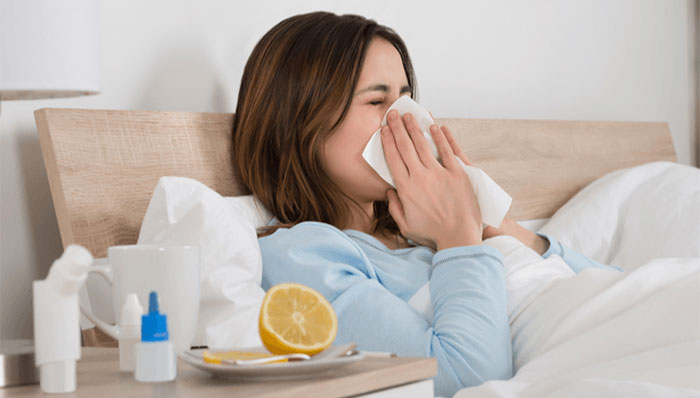The spring and early summer weather in northern Vietnam is characterized by high humidity, commonly referred to as “nồm” weather. This high humidity, which can often reach saturation levels, is a contributing factor to various health issues, particularly respiratory diseases, impacting public health.
Consequences of Humid Weather

Humid weather increases the severity of certain respiratory diseases.
The high humidity can cause discomfort and fatigue, with families living at ground level experiencing it most acutely. The smell of dirty laundry, even washed clothes that cannot dry, and the musty odors from blankets, mattresses, and walls contribute to this discomfort. Humid weather can also cause water to accumulate on floors, making them slippery and posing a risk of falls for children and the elderly, leading to injuries.
High humidity creates an ideal environment for viruses, bacteria, mold, and dust mites to thrive, increasing the risk of respiratory infections (such as acute rhinitis, acute bronchitis, and pneumonia), gastrointestinal infections, certain skin diseases, and heightened allergy symptoms. Humidity directly irritates the mucous membranes of the respiratory tract, leading to inflammation, increased secretion, and bronchoconstriction, resulting in symptoms like coughing, sneezing, and difficulty breathing.
Humid weather triggers outbreaks and exacerbates the severity of chronic respiratory diseases such as chronic obstructive pulmonary disease (COPD) and asthma. Additionally, in hospitals, high humidity can easily cause electrical malfunctions and damage medical equipment.
What Solutions Can Be Implemented?
To mitigate the adverse effects of high humidity, the following measures should be taken to reduce humidity levels in the air. It is best to have a humidity measuring device in the room, maintaining indoor humidity levels between 40 – 60% using methods such as closing windows while using dehumidifiers, setting air conditioning units to dry mode, raising room temperatures, and regularly cleaning floors, walls, and windows with dry cloths.
When cooking, bathing, or other activities that increase indoor humidity, it is essential to use exhaust fans.
Maintain skin hygiene, dry clothes, and commonly used items, especially fabrics.
Alongside treatment measures to manage patients with chronic respiratory diseases, attention should also be given to administering flu vaccinations in the fall and winter for these patients.
In hospital environments, equipment such as dehumidifiers and air conditioning units are commonly used to control humidity in patient rooms, operating rooms, and laboratories. The clear effectiveness of this equipment has significantly reduced humidity in patient rooms, operating rooms, and laboratories. When humidity in patient rooms decreases, patients feel more comfortable, reducing the risk of cross-infection in hospitals and enhancing the treatment effectiveness for respiratory diseases, especially in patients with chronic respiratory conditions.


















































